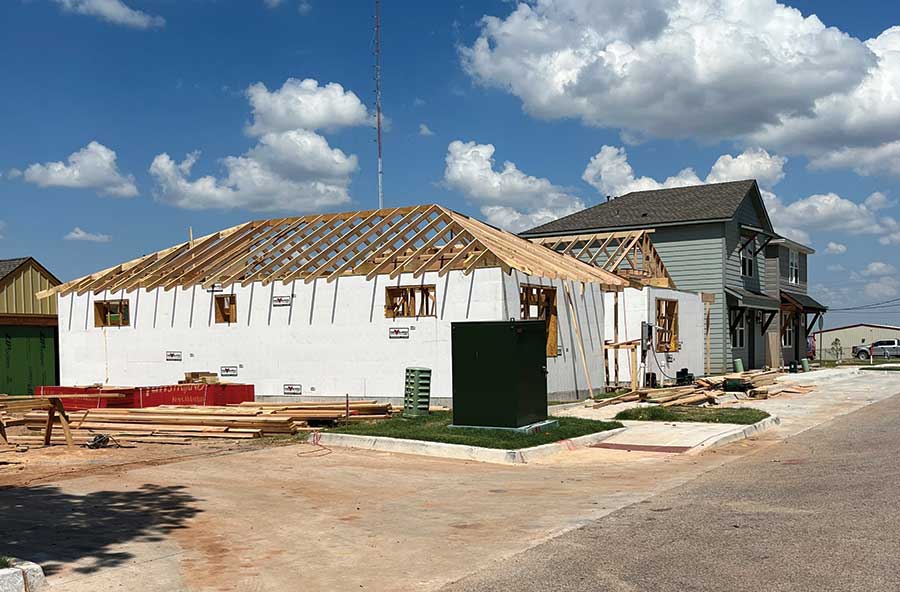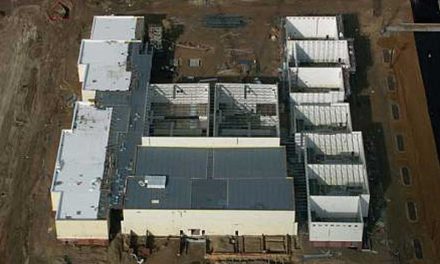By Vanessa Salvia
Photos courtesy of Jack Werner
A couple of months ago, I had a conversation with reader and construction professional Jack Werner, who has owned A to Z Inspections in Oklahoma City, Oklahoma, for 21 years and has a degree in construction with a specialty in inspections. Werner was the first Master Inspector in Oklahoma. Werner let me know that he had read a little about ICFs but his first real involvement started about 12 years ago when he was jogging in Santa Fe, New Mexico, with a light snow coming down. “I noticed several buildings going up with what looked like styrofoam blocks,” Werner recalls. “I stopped jogging and visited with some of the men on the job site. I was intrigued.” Werner continued to learn more and became a huge proponent of ICFs. Later, his company inspected the home of Alfonso Nieves, an Oklahoma-based regional representative for Fox Blocks. At that point, Werner says he really got the opportunity for in-depth learning about ICFs.
“In my opinion, ICF construction and Fortified building requirements are the two most significant improvements to construction in my 50-year career,” he says. Werner and his wife, Suzanne, are now using Fox Blocks for an addition onto their historic home. Suzanne’s community involvement with the 501(c)3 nonprofit community housing development organization, the Oklahoma City Housing Services Redevelopment Corporation, also known as Positively Paseo, has resulted in 22 low-income homes being built with Fox Blocks ICFs. “When you can reduce your energy costs by more than 50%, can have a home that can withstand 200-mile-an-hour winds, and tremendously reduce outside noise, why wouldn’t we look at building with ICFs?” he says.
By combining his home addition with the Fortified building requirements, Werner thinks they can get a 15% reduction in their homeowners insurance premium. Does it cost more to build this way? Yes, it does, and no one is going to try to convince you that it doesn’t. But there’s a payoff later in terms of savings, and priceless peace of mind. “It may cost you 5% or 10% more at initial construction, BUT it will save you THOUSANDS of dollars every year while you are living in a safer, more comfortable home,” says Werner.
The Werners live in a historic neighborhood in a 110-year-old house on a busy street. They are building a fully accessible safe room, office for A to Z Inspections, and a fully accessible bathroom that will be accessible without going up or down stairs. They work with Fox Blocks because of their relationship with Nieves, who is in their area. Three things make the new addition exciting. One is the storm safety, energy efficiency, and noise abatement offered by ICFs. They are adding a FlexStep, which can act as ordinary steps, and a lift for wheelchair users, that will allow Jack’s friend who uses a wheelchair to press a button and roll onto a flat lift that will raise him up into the office.

Community involvement with the 501(c)3 nonprofit community housing development organization, the Oklahoma City Housing Services Redevelopment Corporation, also known as Positively Paseo, has resulted in 22 low-income homes being built with Fox Blocks ICFs.
Jack has been an ICF advocate for years, especially within Suzanne’s housing advocacy work, not only due to the durability but also for reduced operating expenses. “People tend to say ‘I want a really good home, but I want it at the best price I can get,’” he says. “And oftentimes, that simply doesn’t face the fact that the cheaper price today may not be the best choice.” Jack believes that as the years go on, utilities like electricity are going to become ever more expensive. He saw this first-hand when his father’s electric bill eventually became larger than their house payment.
“I think utility bills are one critical thing and Fox Blocks, or any good ICF, well installed, will absolutely cut utility costs,” he says.








